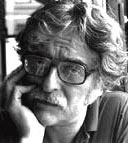 |
→ November 2007 Contents → Column
|
Nuts & Bolts
November 2007
|
 |
|
A number of my friends and acquaintances are shooting digital professionally, but shooting their personal projects on film.
There are some common denominators among these folks. They are all black-and-white shooters. Many grew up shooting black-and-white film and continued to use it for personal projects even when they were shooting magazine assignments on color transparency film.
They didn't like the limited tonal range and exposure latitude of the reversal film that the magazines preferred. And, shooting personal work that ranged from street photography to documentary projects, they did not like getting stuck with color that they couldn't control and which often detracted from the picture.
When they moved to digital, it was easy to convert the raw color images to black-and-white. But the extended tonal range of black-and-white negative film was missing. They were, in essence, back to shooting something like a black-and-white Kodachrome (or Ektachrome or Fujichrome).
When working digital quickly, it was too easy to blow out the highlights, exceed the range of the sensor and produce washed out, detail-less high values, the digital equivalent of a transparency film's clear film base. This was absolutely the number one objection of black-and-white shooters I talked with who had gone back to film. With black-and-white negative film you could always find some way of punching enough light through even the worst negatives to gain highlight detail.
As to the limited range of tones – running tests on several digital cameras that are popular with news photographers, I found that they all followed a similar pattern. With the JPGs that many news photographers shoot - two stops up from a midpoint neutral gray – detail. Three stops – no detail, once again the digital equivalent of transparency film's clear cellophane.
It is a little more difficult to describe the dark tones below a midpoint neutral gray. Values up to two stops lower easily separated from other darker values and provided detailed shadows, etc. Areas below that were not the blackest of blacks in the picture, but any sense of detail or texture faded fast. Once again, we find ourselves describing black-and-white Kodachrome, a black-and-white image with the limited tonal range we associate with color transparency film.
Shooting raw improved the range of brightness values that could be captured. But not as much as you might expect. The exact amount depended upon camera and raw conversion program, but it never really exceeded a stop. The real gain of shooting raw remained the ability to control color and correct exposure.
There are some ways to overcome a limited brightness range. One is to give the most exposure you can without blowing out the highlights. While there are complicated spot metering techniques that can determine such an exposure, it's easier to set your histogram and preview to handle the problem. Many digital cameras have a preview setting in which the highlights in the small image that appears with the histogram blink with a black or color overlay if they are overexposed and without detail. Simply use the most generous exposure that doesn't produce these blinking warning signs.
Remember, however, that these blinking highlights refer to a JPEG. If you can shoot raw, you may be able to increase your exposure by a slightly greater amount and capture a slightly greater range.
Unfortunately, this procedure takes time and that simply is not a luxury that you have in many news situations. Thus, I'm going to suggest a much simpler alternate technique that has worked for me - SURRENDER.
Just accept the fact that you can only capture a limited range of tones and work with them. There are certain contrasty situations in which you will never be able to capture the tone range that Edward Weston and Ansel Adams did. Live with it.
Learn to squint so that you lose some of the shadow detail in the scene in front of you. Learn to previsualize and see the scene as the camera sees it. There are certain areas, such as capturing an extended tonal range, in which many of our digital cameras can't compete with negative film. But, obviously, when it comes to making strong, dramatic images, digital has no problem competing with film.
Besides, all those film guys, you know they're scanning their negatives and printing digitally.
I'm on the road and far away from the hard discs that store my pictures. So, this month's "picture that has nothing to do with this column" is just a snapshot that I left on this traveling computer a long time ago. It was taken on a Time assignment in Atlantic City. The editor said that they liked the picture and a number of others taken on the boardwalk, but unfortunately they had nothing to do with the story they were running.
© Bill Pierce
Contributing Writer
|
|
Back to November 2007 Contents
|
|
